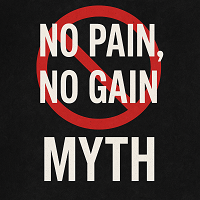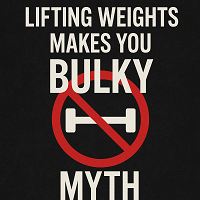
Fitness is a journey, and along the way, many of us encounter advice that sounds convincing but is actually misleading. Some of these myths have been around for years, leading people to adopt ineffective or even harmful habits. It’s time to set the record straight! Here are some of the biggest fitness myths that should break today.


A common saying in the fitness world, but it’s not entirely true. While some discomfort is normal as your body adapts to new challenges, excessive pain can indicate injury or overtraining. Listen to your body and focus on progressive overload rather than pushing through severe pain.


Many people, especially women, avoid strength training for fear of getting too muscular. However, building large muscles requires intense training, specific nutrition, and genetics that most people don’t have. Strength training actually helps tone muscles, boost metabolism, and improve overall fitness.


Sweat is your body’s way of regulating temperature, not an indicator of fat loss. You might sweat more in a hot environment or during an intense workout, but that doesn’t mean you’re burning more calories or shedding more fat.


Many believe that doing hundreds of crunches will lead to six-pack abs. Unfortunately, fat loss doesn’t work that way. Your body loses fat based on genetics and overall calorie expenditure. A combination of a balanced diet, strength training, and cardio is the best way to reduce body fat.


The idea that eating after a certain hour leads to fat gain is a myth. Weight gain happens when you consume more calories than you burn, regardless of the time of day. It’s more important to focus on overall diet quality and portion control.


Cardio can help with weight loss, but it’s not the only way. Strength training is just as important because it builds muscle, which helps increase your resting metabolism. A combination of both is ideal for long-term weight management.


Detox teas and weight-loss supplements are often marketed as quick fixes, but they don’t lead to sustainable fat loss. Many of these products just cause water loss and may have negative health effects. The best “detox” is a balanced diet, hydration, and exercise.


Ab exercises strengthen your core, but they won’t make your abs visible if there’s fat covering them. A well-rounded fitness plan that includes strength training, cardio, and proper nutrition is key to revealing those abs.


Overtraining can actually hinder progress and lead to injuries, fatigue, and burnout. Rest and recovery are just as crucial as workouts in achieving long-term fitness success.


Many people believe that they need to hit the gym every single day to make progress. However, rest and recovery are just as important as workouts. Overtraining can lead to burnout, increased injury risk, and muscle fatigue. Giving your body time to recover allows muscles to rebuild and grow stronger.


Some people think that yoga is just about stretching and relaxation, but it can actually be a powerful workout. Many styles of yoga, such as power yoga and vinyasa, build strength, flexibility, and endurance. Yoga also improves mobility, balance, and mental well-being, making it an excellent complement to other forms of exercise.


While working out in the morning has benefits, such as boosting metabolism and improving consistency, the best time to work out is whenever you can be consistent. Some people perform better in the evening due to increased body temperature and energy levels. Ultimately, the best time to work out is the time that fits your schedule and allows you to stay committed.
Believing in fitness myths can prevent you from reaching your goals efficiently. Understanding the facts and making informed decisions will set you up for long-term success. Focus on consistency, balanced nutrition, and a well-rounded exercise plan, and don’t let these myths hold you back!
© Fitness Talk. All Rights Reserved.